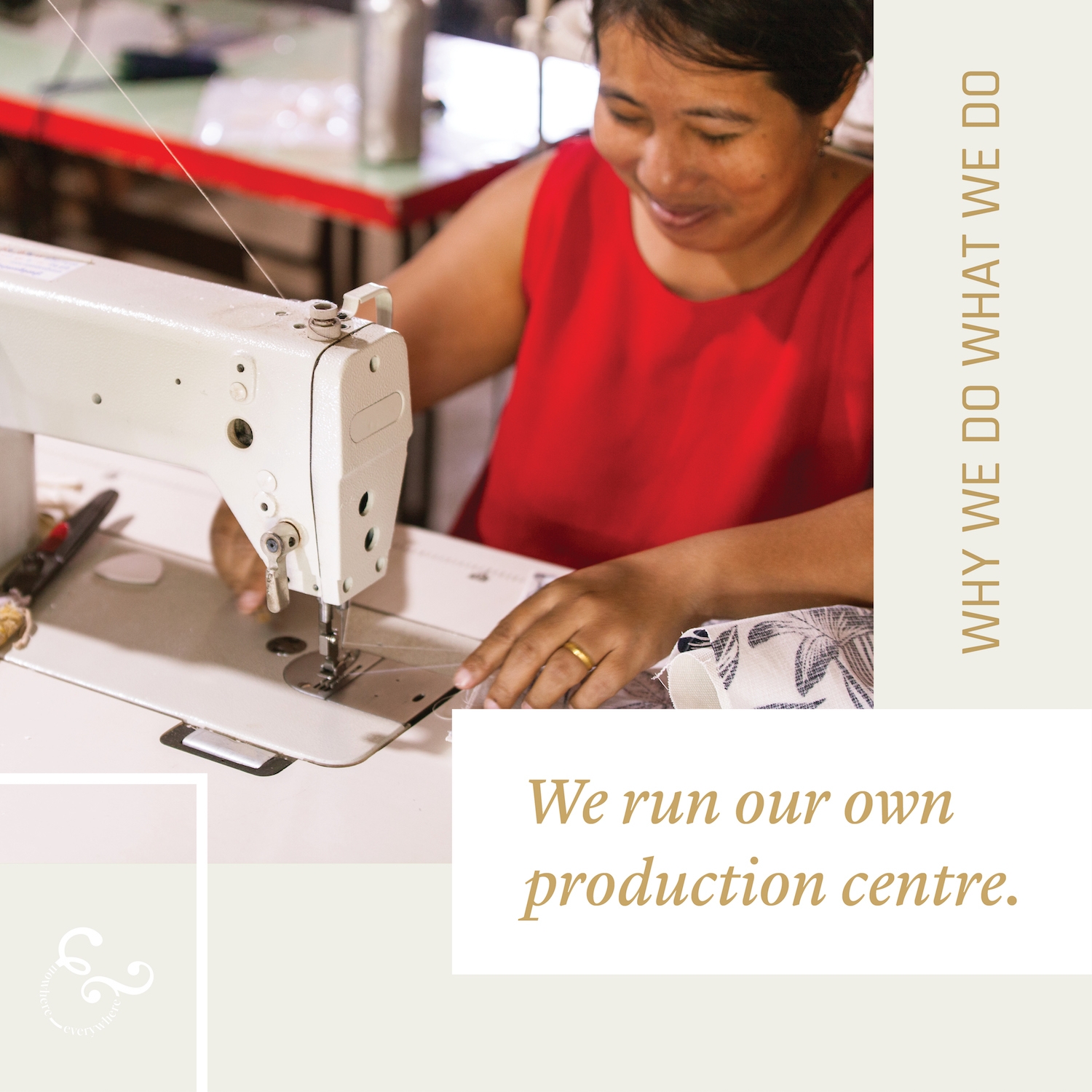Because we’re crazy? : )
The majority of our products are made at our own little studio in rural Cambodia. When not making products yourself, most companies head to manufacturing companies (largely in China) to make their goods. We absolutely did not want to do that. Lis had worked in Cambodia for the best part of the past decade and knew there was a little organization teaching sewing skills and making uniforms in a pretty bleak space; there was no funding for it.
So, we took it on. A couple of months ago we renovated it completely and took it from a small dark room to a much larger, bright, airy studio with lots of plants, storage and everyone working together. And lots of extras! We’re writing it all up and will be posting about it next week (with plenty of pictures).
But why did we do it this way? Well, we wanted to help rural people. Most production is concentrated in or around city areas. We believe strongly in helping local, grassroots organizations. This place needed assistance and we wanted to do it in a way that created a positive space whilst still supporting community projects. We didn’t want to be part of an industry where workers get shipped in on trucks to sit in rows of people spitting out quotas of products for a western client.
We wanted to be able to work on salaries and increase them whenever we can. In factories they produce goods for multiple brands so you don’t have a say over how much you pay them or how they work (and whether it is truly ethical). We wanted to make it a nice workspace – one that was safe, inviting and that we would work in. It’s just like our own studios…except without flat walls, wooden floorboards and a tiled roof! We are very limited to the resources we have and rely on local workers to guide us on what’s possible. Straight lines apparently aren’t ; )
We wanted to be able to control things like how goods are packaged and shipped to us (without plastic), how we source fabrics (recovering them), how we use our waste (all of it!) and how we label (by using our scraps). You can’t dictate that to a manufacturer. We wanted to be part of a small space. We didn’t want big machines making things. We didn’t want to contribute to emissions from a factory. We are small and handmade and have as little impact as we can. We wanted to make sure workers could go hang out with their families for lunch, be working normal work days (7.5 hours) and bring their kids in if they wanted. The other week a mum came in with her kid asleep on her chest all morning with another in the hammock. It is super chilled out to work here and it’s exactly like how most of us work.
Lis regularly spends months on the ground (she’s still there!) and you’ll find her at the studio every day. By being there so much we can all work together on samples, learn the best ways to do things and we can also catch any mistakes as they happen. Most other businesses have to get rid of 10% of their stock when they receive it due to errors and oversights. We don’t.
That’s a small insight!



